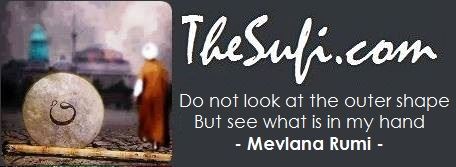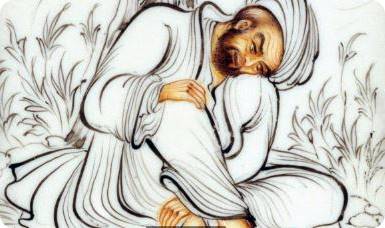Ni Main Jana Jogi De Naal”: Explaining Ahad and Ahmad: Letter by Wazir Dayers
Dear Brother W,
In the Nusrat Fateh Khan Qawwali “Ni Main Jana Jogi De Naal [Full Version 29 minutes] below, the names Ahad and Ahmad are mentioned. [ﺃﺤﺩ – ﺃﺤﻤﺩ]
As you know, “Ahad” is a name of God (see Qur’an 112) and means “the Unique”, “the One and Only”. “Ahmad” is a name of the Holy Prophet (PBUH) and means “Most Praised One” or “Most Deserving of Praise”.
There is a mystical relation between the names “Ahad” and “Ahmad”: al-Ahad, i.e. Allah, is limitless. The only difference between “Ahad” and “Ahmad” is the letter mīm. The Sufis consider Ahmad – the Holy Prophet – as the prototype of the fully realised man, man who has realised his mystical potential, i.e his true Divine Nature. They say that the letter mīm is the only thing that separates the Prophet from God.
In this case, the letter mīm can be interpreted in a number of ways:
- It may be understood as the first letter of mahdūd (“limited”); and indeed, man is limited by the physical circumstances of living on earth.
- It may also be the first letter of mumkin (“possible”), indicating that man possesses the potential to attain to the highest degree of mystical realisation.
- It represents the sound of mystical completion (m), and the completion of the Circle of Prophethood (Dā’irat-un-Nubūwa), which began with Adam and was completed by Muhammad. To the Sufis and many Muslim scholars, Adam was not the first human being created by God, but the first Messenger of God. He was the first fully realised human in history and possessed Divine Knowledge. Therefore he was suited to guide his fellow humans to True Religion. There is a hadīth about this: “It was narrated that Abū Dharr said: I said: O Messenger of Allah, how many Prophets (Nabī, plural Anbiyā’)were there? He said: “One hundred and twenty four thousand.” I said: O Messenger of Allah, how many of them were Messengers (Rusul, the plural of Rasūl, which is higher than Nabī)? He said: “Three hundred and thirteen, a good number.” I said: O Messenger of Allah, who was the first of them? He said: “Adam.” (Narrated by Sahīh ibn Hibbān, 361)
Please note that the name “Ādam” starts with the open vowel “A”, which represents manifestation, as opposed to the consonant “m” in “Muhammad” and “Ahmad”, which symbolises completion.
The same symbolism is to be found in the basic Hindu mantra OM, which really consists of three sounds: A-U-M. There too, “A” stands for “manifestation/creation”, associated with Brahma. The sound “U” stands for “sustainment”, associated with Vishnu. You also find this ū-sound is the divine name “al-Qayyūm”, which is very often translated as “the Sustainer”. And finally, the sound “M” represents “completion” and “destruction and renewal”, associated with Shiva.
Hinduism literally has thousands of deities, which are rejected by orthodox Muslims. But if you look at all these deities as partial manifestations, aspects or qualities of One Single Divine Being or One Single Divine Reality, it’s not so difficult to accept them.
Once more this goes to show that if you look at religions from a mystical point of view, they are not as different as they seem.
That’s all I have to write about it. May this version of “Ni Main Jana Jogi De Naal” bring you much joy!
Your brother
Wazir




